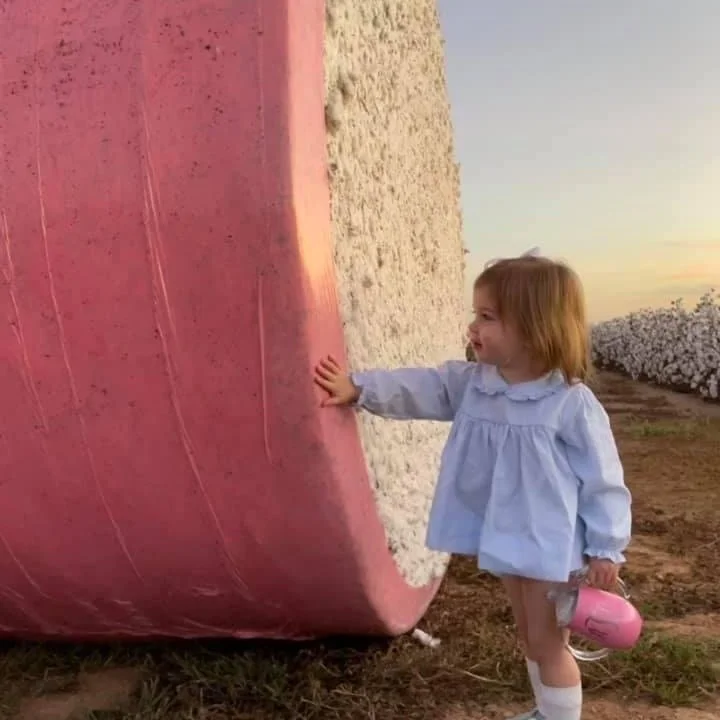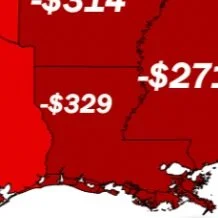This month’s 2023/24 U.S. corn outlook projects slightly larger supplies and ending stocks. Projected beginning stocks for 2023/24 have been lowered by 5 million bushels mostly due to offsetting trade and corn used for ethanol changes for 2022/23. Corn production for 2023/24 is forecast at 15.1 billion bushels, this a 23-million-bushel increase from last month’s estimates as greater harvested area more than offsets reductions in yield.
Read MoreThe American Society of Agricultural and Biological Engineers (ASABE) developed a rectangular wrap standard about the time the round module wrap was gaining fast acceptance. In 2019, led by Dr. John Wanjura with USDA’s Agricultural Research Service, a subcommittee was formed to begin the round module wrap standard development.
Read MoreLouisiana corn for grain production is forecast at 119 million bushels, up 25 percent from the August 1 forecast and up 61 percent from 2022. Based on conditions as of September 1, yield is expected to average 175 bushels per acre, up 6 bushels from last month and up 5 bushels from last year. Planted acreage is revised to 700,000 acres, up 120,000 acres from June 2023. Harvested acreage for grain is revised from 565,000 to 680,000 acres.
Read MoreLast week was a case of bad news for some was good news to others. Hurricane Idalia was expected to take her Category 3 winds east of all but a small portion of the Georgia crop. Instead, upon landfall it veered slightly northward damaging a much larger expanse of the state’s crop.
Read MoreThe U.S. Cotton Trust Protocol is pleased to appoint Averum to provide additional Third-Party verification support after seeing the highest number of grower enrollment to date. With a 120% increase in grower enrollment since launch three years ago, the program now requires a significantly higher number of independent verifications.
Read MoreThe Cotton Board recently held its 2023 Annual Meeting in Durham, North Carolina, along with Cotton Incorporated’s Board of Directors. During this meeting, board members serving the Cotton Research and Promotion Program reviewed, analyzed, and voted to recommend Cotton Incorporated’s 2024 budget of $89 million to the Secretary of Agriculture. This budget recommendation reflects a $2 million increase from 2023.
Read MoreThis month’s 2023/24 U.S. corn outlook is for reduced supplies, lower domestic use, smaller exports, and tighter ending stocks. Projected beginning stocks for 2023/24 this month have been raised 55 million bushels higher based on a lower use forecast for 2022/23, reflecting reductions in corn used for exports, glucose and dextrose, and starch.
Read MoreIf you want to honor a cotton consultant, nominate him or her for the prestigious 2023 Cotton Consultant of the Year (CCOY) Award.
The 2023 CCOY recipient will be named at a special celebration Friday, March 1, 2024, at the Peabody Hotel in Memphis, Tennessee.
Read MoreAs Louisiana cotton producers move into cotton harvest season, Louisianians will see an influx of used and custom cotton harvest equipment moving into and through the state. To protect our cotton producers from the reintroduction of boll weevils, the Louisiana Department of Agriculture and Forestry (LDAF) implements restrictions for all cotton harvest equipment entering the state.
Read MoreFall armyworms, Spodoptera frugiperda, are chronic insect pests in the state, with more than 60 plants reported as hosts, including various pasture grasses (and lawns) and agronomic crops including corn, alfalfa, cotton, soybeans, grain sorghum, and rice. They migrate to Louisiana from neighboring regions like Florida, Texas, Caribbean islands, and Central-South America, with infestations most common from late July to early August.
Read MoreFor more than two decades, and over the course of the last four farm bills, farm program payments have been based on a farm’s historical planted acreage, i.e., base acres, and not on actual plantings each year. Decoupling Agriculture Risk Coverage and Price Loss Coverage farm program payments prevents farmers from making planting decisions based on expected program payments. Instead, the current system ensures farmers evaluate only market supply and demand signals and expected returns per acre when determining which crops to plant each year.
Read MoreHot weather across the cotton belt is creating uncertainty about the size of the US crop, said Shawn Wade, director of policy analysis and research at Plains Cotton Growers. “It could be anywhere between 14 million bale to 16 million bale crops. You’ve got some pretty high temperatures settling into parts of Louisiana, Mississippi.”
Read MoreIf you want to honor a cotton consultant, nominate him or her for the prestigious 2023 Cotton Consultant of the Year (CCOY) Award. Click here to access the 2023 nomination form. The deadline for nominations is August 15. If you have any questions, call Carroll Smith at 901-326-4443 or email csmith@onegrower.com.
Read MoreThe U.S. Cotton Trust Protocol today announced the appointment of Daren Abney as Executive Director. A sustainability veteran, Abney brings 15 years of international experience garnered in organizations across the apparel and fashion industry such as Better Cotton, Textile Exchange, and most recently Lenzing Group.
Read MoreThere will be a cotton/corn/soybean field tour at the Northeast Research Station in St. Joseph next Tuesday, July 25th, beginning at 5 pm. It will feature talks on row spacing, fertility, weed control, disease and insect control. It will also have one stop showing the difference between planting cotton into 2 different cover crops. There will be a meal after the tours are over.
Read More













